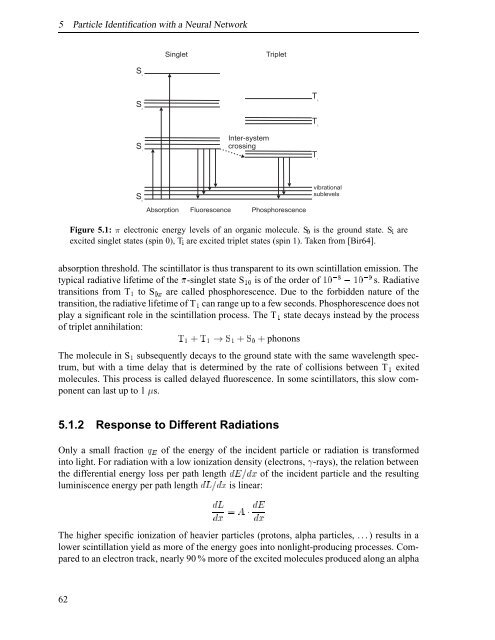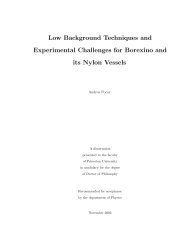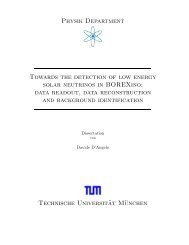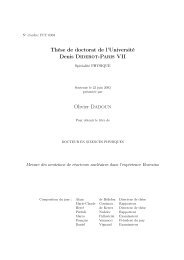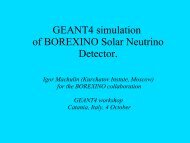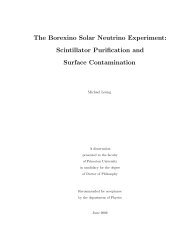Development of a Liquid Scintillator and of Data ... - Borexino - Infn
Development of a Liquid Scintillator and of Data ... - Borexino - Infn
Development of a Liquid Scintillator and of Data ... - Borexino - Infn
Create successful ePaper yourself
Turn your PDF publications into a flip-book with our unique Google optimized e-Paper software.
5 Particle Identification with a Neural Network<br />
Figure 5.1: electronic energy levels <strong>of</strong> an organic molecule. S is the ground state. S are<br />
excited singlet states (spin 0), T are excited triplet states (spin 1). Taken from [Bir64].<br />
absorption threshold. The scintillator is thus transparent to its own scintillation emission. The<br />
typical radiative lifetime <strong>of</strong> the -singlet state S is <strong>of</strong> the order <strong>of</strong> s. Radiative<br />
transitions from T to S Ü are called phosphorescence. Due to the forbidden nature <strong>of</strong> the<br />
transition, the radiative lifetime <strong>of</strong> T can range up to a few seconds. Phosphorescence does not<br />
play a significant role in the scintillation process. The T state decays instead by the process<br />
<strong>of</strong> triplet annihilation:<br />
Ì Ì Ë Ë phonons<br />
The molecule in S subsequently decays to the ground state with the same wavelength spectrum,<br />
but with a time delay that is determined by the rate <strong>of</strong> collisions between T exited<br />
molecules. This process is called delayed fluorescence. In some scintillators, this slow component<br />
can last up to 1 s.<br />
5.1.2 Response to Different Radiations<br />
Only a small fraction Õ <strong>of</strong> the energy <strong>of</strong> the incident particle or radiation is transformed<br />
into light. For radiation with a low ionization density (electrons, -rays), the relation between<br />
the differential energy loss per path length Ü <strong>of</strong> the incident particle <strong>and</strong> the resulting<br />
luminiscence energy per path length ÄÜ is linear:<br />
Ä<br />
Ü<br />
¡ <br />
Ü<br />
The higher specific ionization <strong>of</strong> heavier particles (protons, alpha particles, ...) results in a<br />
lower scintillation yield as more <strong>of</strong> the energy goes into nonlight-producing processes. Compared<br />
to an electron track, nearly 90 % more <strong>of</strong> the excited molecules produced along an alpha<br />
62


